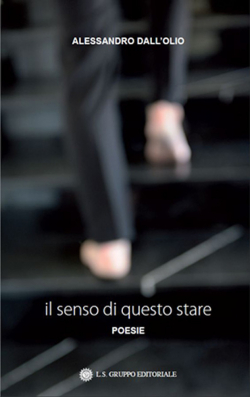Editorial
by Francesca Del Moro
Come dance in Puglia
Trembling like a leaf
Keep your head up when you walk
By the crane
Because it may break off
And fall down.
With a succession of images, Michele Salvemini, aka Caparezza, provides an unusually violent interpretation of the metaphor of the leaf, that here symbolyzes the condition of workers in Puglia: a dance of death fades out in a shivering that reminds of Ungaretti (nowadays workers are not safer than soldiers) and the leaf breaking off the branch turns into the much more frightful fall of the piece of a crane. A similar reinterpretation of the iconography of the leaf in the form of engaged poetry is at the heart of Valentina Gaglione’s poem. Here the leaves become affectionate and helpful mother figures that accompany the journey of fragile people hanging on a branch of hope: migrants, boys and girls facing the lack or inadequacy of work, citizens of countries at war, victims of smog and concrete or lonely people tormented by nostalgia. The same sense of frailty and uncertainty permeates the poem by Bill Dodd, where the contemplation of an autumn landscape generate beautiful and vivid pictures and a philosophical reflection on our perceptions and the way we manage and enjoy them. The same lyric and conceptual effectiveness is to be found in the short poem by Fabia Ghenzovich, a snapshot of the flight of a leaf, that gives the cue for a debate about the instantaneous and unpredictable nature of happiness and the transit from life to death.
Autumn in the Casentino
di Bill Dodd
A palette of auburn yellow orange ochre
ginger russet setter-red shook and smudged
this morning on our hills. You snapped it
for later. We stopped the pick-up to save
it for later. Why always for later, knowing
it’s here now? See one leaf of one
tree. Impossible. See one tree of one
wood, one grove of one hillside. Impossible.
Everything runs away into more, and we
love it. Such happy eyes, rolly-pollying
across acres. Such sad minds trying to
gather moss. We start the pick-up,
stop the snaps. The road holds us together
down the hill, bumps us together on
the front seats, shoulder knocking shoulder.
We’ll talk about the colours later, each
naming one, seeing another, not one leaf
or tree of which we can be sure we saw.
Autumn
by Fabia Ghenzovich
Just a shiver of the wind,
And the last leaf falls,
But she didn’t know
What enrapturing breeze
That flight could be.
Leaves et cetera, a slow falling
by Valentina Gaglione
Dried leaves turn into mothers
Bandaging the pain of forsaken steps
Tone cycles.
Green hope and then
Brown inconsistency.
Without the strength of a dumb self-producing.
They lack the boldness of the race,
The capability of conceiving the flight
In a slow descent.
Not begging
But parallel to dreams.
And in dreams
I fill up the bath-tub with red leaves,
I invite the drunkard
To enjoy some company
In a free will of melancholy.
And in dreams
The dimming light grazes the damp leaf,
Sticks to the glass of the windows,
And smiling expressions
Stop the amber of migrant faces.
An ochre carpet dresses November.
Peace line or reassuring swindle?
Vine leaves of blackberry bush and prickles
Interlace to form crowns
On young heads of impetuous youths
To be crucified!
Among tall buildings or making the queue at the offices
In search for a non-existent job
For an inconsistent job.
Light bodies,
Slow
Falling.
Leaves of smog and fine dust,
Collected by a child,
As if they were the most beautiful of all,
To drive out the cheat of concrete
And bury the solitude.
Dried leaves change into mothers
Bandaging pain of forsaken steps
Il senso di questo stare
by Alessandro Dall’Olio
“Il vuoto della festa
che è stata
è solo la sedia
che ti accolse.
Non ricordo altro.”
Nel leggere Il senso di questo stare, la prima sensazione che si avverte e diviene sempre più chiara pagina dopo pagina è l’incredulità. Incredulità di trovarsi inaspettatamente di fronte a un grande poeta. Una categoria che si pensa abbia bisogno di una qualche convalida storico-critica, che si tende a relegare in un passato più o meno remoto e popolato di “classici”. Ma un grande poeta è colui al quale ciascun lettore sente l’urgenza di dare questo nome, è un concetto che caparbiamente sfugge a qualsiasi tentativo di definizione. Così come l’amore, che solo l’amante è in grado di riconoscere e rivendicare come tale. L’amore è il perno intorno al quale vorticano le poesie di questa raccolta: una passione che sconfina nell’ossessione imponendosi con una potenza tale che chi la conosce, e forse anche chi non l’ha mai provata, non può fare a meno di sentirsi mordere la pelle, aprire il petto per accogliere di volta in volta lo slancio vitale, il tormento, la nostalgia, lo smarrimento e il desiderio. Con coraggio e senza alcuna pietà per se stesso, Alessandro si svela intimamente nudo e vulnerabile lasciando tracimare l’enorme sentimento che lo possiede sotto forma di parole che, incisive, belle e dense di significato, arrivano ad ammantare di una luce nuova e più tersa ogni aspetto, anche minimale, del reale interiore ed esteriore. Abitato dall’essere amato, che dietro ogni verso fa capolino sotto forma di un “tu” sempre presente anche quando apparentemente si parla d’altro, il poeta sembra possedere tutti i sensi raddoppiati, che in quanto tali gli consentono di raccontare le proprie percezioni con analitica precisione. Difficile uscire indenni dalla lettura di questo libro, che nella postfazione Maria Luisa Vezzali definisce opportunamente “un’enciclopedia dei sensi”, un moderno canzoniere petrarchesco dove l’amante tuttavia accetta il proprio vivificante sentimento senza alcuna remora.

